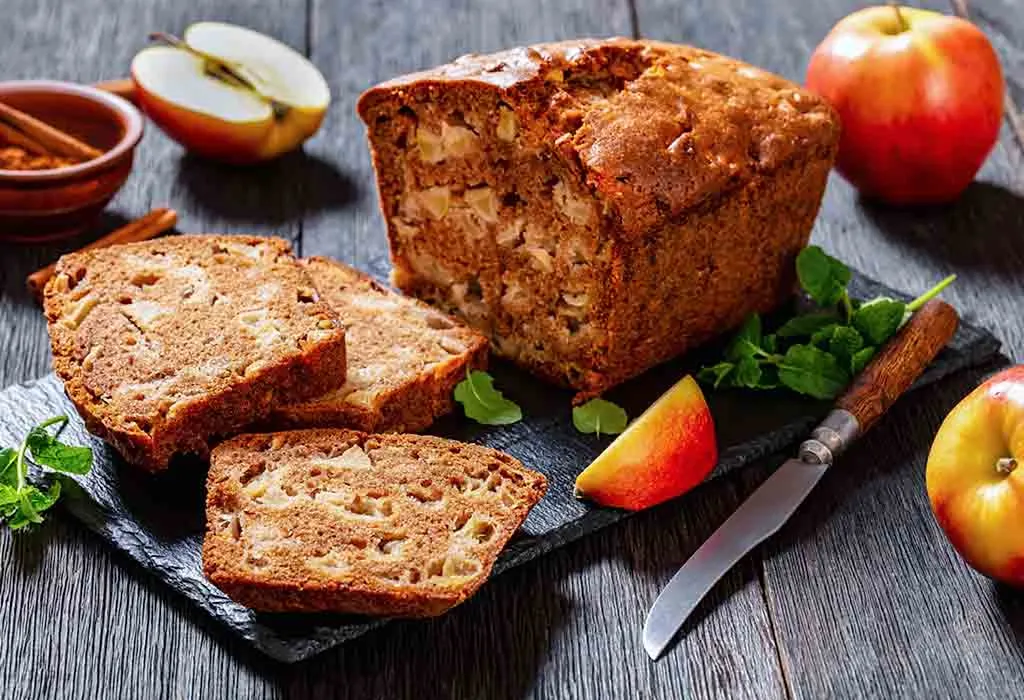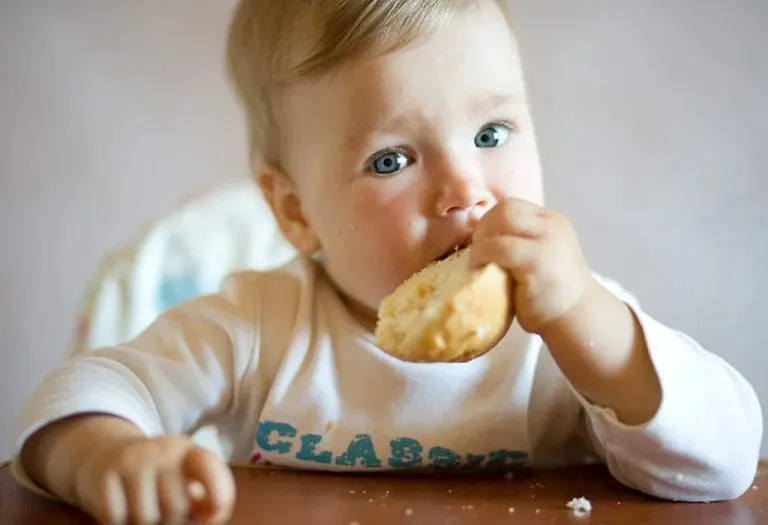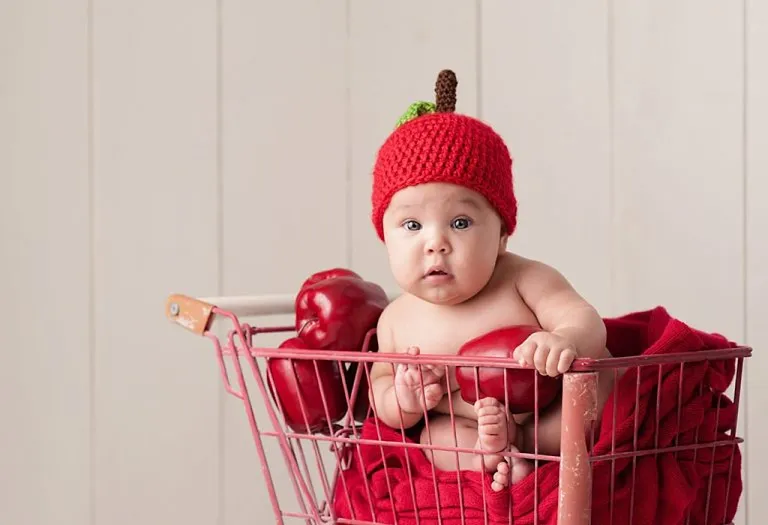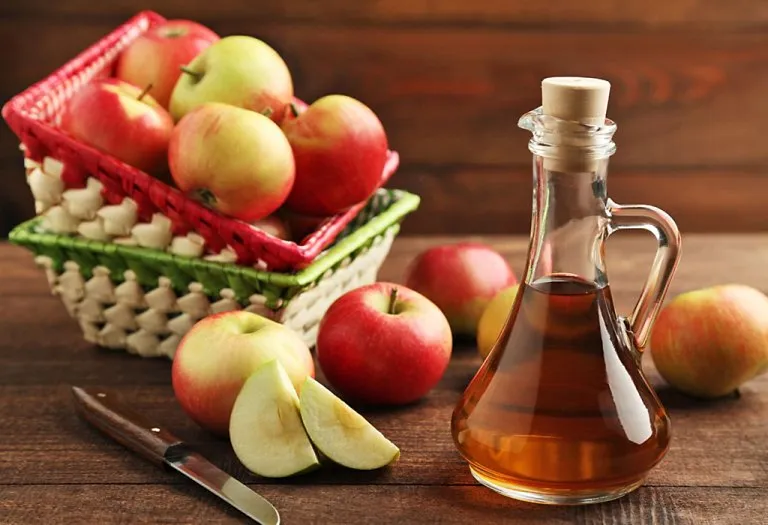Bread for Babies – When to Introduce, Precautions, and Recipes
- Is It Safe to Give Bread to Infants?
- Nutritive Value of Bread
- When Can You Give Bread to a Baby?
- Which Bread Is Best for Babies?
- How Much Bread Should You Give Your Infant?
- How to Serve Bread to Your Baby?
- Precautions to Take While Giving Bread to Babies
- Simple Bread Recipes for Babies
- Alternatives to Bread for Babies
- FAQs
Bread, with its different variations in form and flavor, stands out as a typical breakfast staple, loved not only for its simplicity but also for its delightful taste. The need to incorporate this versatile food item into your baby’s diet may naturally arise, prompting the question: when is the right moment for introduction? This topic requires a nuanced understanding of readiness cues and nutritional suitability. By carefully navigating these considerations, you can understand the optimal time to introduce bread to your baby, facilitating a smooth transition to solid foods and nurturing their culinary exploration and development. Read on to learn all about bread for infants, the best time to introduce bread to babies and more
Is It Safe to Give Bread to Infants?
Is bread good for babies? Your little one’s nutritional needs are of prime importance, so it’s essential that you know beforehand. Feeding your baby bread largely depends on how old he is and whether or not he is allergic to bread. First of all, it is not recommended that you give bread or any other solid foods to your baby before six months of age unless the doctor advises you to do so. Secondly, it is important to establish whether or not your baby is allergic to bread. Before you go for any trial-and-error methods, we recommend you consult your doctor for the same. After your doctor gives you a heads-up, you may safely add bread to your baby’s diet.
Nutritive Value of Bread
Here’s a comparison of the approximate composition of a single medium-sized slice of refined bread, whole-wheat bread, and enriched bread.
| Nutrient | Refined bread | Whole-wheat Bread | Enriched bread |
| Energy (Kcal) | 74.5 | 90.7 | 69.9 |
| Protein (g) | 2.48 | 4.48 | 2 |
| Carbohydrate (g) | 13.8 | 15.4 | 13 |
| Fiber (g) | 0.756 | 2.16 | 0 |
| Calcium (mg) | 40.3 | 58 | 25 |
| Magnesium (mg) | 6.44 | 27 | 0 |
| Phosphorus (mg) | 27.4 | 76.3 | 0 |
| Potassium (mg) | 35.3 | 91.4 | 20 |
| Sodium (mg) | 137 | 164 | 120 |
| Thiamin (mg) | 0.149 | 0.142 | 0 |
| Riboflavin (mg) | 0.068 | 0.06 | 0.1 |
| Niacin (mg) | 1.34 | 1.6 | 1.1 |
| Folate (µg) | 31.1 | 15.1 | 25 |
| Choline (mg) | 4.09 | 9.79 | 0 |
When Can You Give Bread to a Baby?
When can babies eat bread and butter, you ask? It is wise to add bread to your baby’s diet only after your doctor has established that he is not allergic, and he is over 6 months old. Ideally, the best time to add bread to your baby’s diet is around 1 year of age.

Which Bread Is Best for Babies?
The next question that may concern you is, which is the best bread for your baby? There are numerous options available in the market today – whole wheat bread, whole grain bread, low salt bread, white bread and brown bread just to name a few, and choosing one can be confusing. There is no doubt that brown bread is power-packed with nutrients because it is made with whole grains; on the other hand, white bread is ripped off many of its nutrients because it is made using refined flour. However, the amount of fibre in brown bread may not be suitable for small babies because it can fill their bellies and reduce their appetite, which means less room for other foods and nutrients. Also, more amounts of fibre in the diet may hamper the zinc and iron absorption by the body. Therefore, the best bread for babies is white bread instead of brown bread to babies, keeping in mind that it may not give them a lot of nutrition.
How Much Bread Should You Give Your Infant?
As discussed in the above section, white bread is not rich in vital nutrients that are important for the optimal growth and development of a baby. Therefore, it is recommended that you do not go overboard feeding large amounts of bread to your baby. Before getting your baby the right bread, remember that storebought bread contains a lot of sodium owing to the salt content – a baby’s system is too fragile to handle too much salt. So, ensure that you don’t feed your baby too much bread. We recommend adding small amounts of bread to his diet three to four times a week.
How to Serve Bread to Your Baby?
Introducing bread into your baby’s diet can be an exciting milestone, but it’s essential to do it safely and appropriately. As you navigate this new culinary adventure, consider your baby’s age and developmental stage, as well as any potential allergens. Here’s a guide on how to serve bread to your little one at various stages of their growth:
For 6 Months
- Begin with soft, finely mashed bread or bread soaked in breast milk or formula to make it easier for your baby to digest.
- Avoid crusts or hard pieces that could pose a choking hazard.
- Monitor your baby closely for any signs of discomfort or allergic reactions.
For 9 Months
- Introduce soft, small pieces of bread that your baby can easily pick up and chew.
- Offer a variety of bread types, such as whole grain or multigrain, to expose your baby to different textures and flavors.
- Continue to supervise your baby during meals and be prepared to intervene if needed.
For 12 Months
- Gradually increase the size and variety of bread pieces to encourage self-feeding and independence.
- Consider offering bread with toppings like mashed avocado or nut butter for added nutrients and flavor.
- Keep offering a balanced diet that includes a variety of foods to support your baby’s growth and development.
For 18 Months
- Encourage your toddler to explore different ways of eating bread, such as sandwiches or toast.
- Involve your child in meal preparation by allowing them to spread toppings or assemble sandwiches with supervision.
- Continue to monitor your toddler’s eating habits and preferences, making adjustments as needed to ensure they receive adequate nutrition.
Precautions to Take While Giving Bread to Babies
Introducing bread to your baby’s diet can be an exciting milestone, but it’s important to ensure their safety and well-being during this transition. Here are some precautions to keep in mind when giving bread to babies:
1. Ensure Freshness
Prioritize freshness by checking the manufacturing date and the “best before” or “use by” date when selecting bread.
2. Check for Additives
Choose bread with low sodium and no added sweeteners, while also scrutinizing for any additional additives, such as food coloring.
3. Avoid Multi-Grain Bread
Steer clear of multi-grain whole-wheat bread due to potential allergens like seeds and nuts; instead, choose single grain (whole-wheat) bread to minimize the risk of allergic reactions.
4. Verify “Brown Bread” Content
Be cautious as not all “brown bread” is necessarily 100% whole-wheat; carefully inspect the ingredients for 100% whole-wheat flour and the percentage of whole-wheat content.
5. Choosing Whole-Wheat Bread
Opt for whole-wheat bread over refined or enriched varieties, ensuring to look for packaging labeled as “100% Whole-Wheat.”
6. Gradual Introduction
Adopt a cautious approach by waiting three to five days before introducing bread to your baby’s diet to assess for any sensitivities or allergies to wheat; refrain from introducing other new foods during this period.
7. Watch for Symptoms
Be vigilant for symptoms of wheat allergies, such as hives, wheezing, stomach ache, and diarrhea, which may manifest immediately after consuming wheat-based foods (1).
8. Consider Alternative Options
Consult your pediatrician before considering alternative bread options made from almond, legume, or tuber flours for babies with wheat allergy or sensitivity. Ancient grains like millet, quinoa, buckwheat, and teff can also serve as nutritious alternatives to traditional wheat bread.
Simple Bread Recipes for Babies
Looking for ways to introduce bread to your little one? Here we have some easy-to-make, yummy bread recipes for babies. However, before introducing bread or any other food, you should ensure that your baby is not allergic to it. The ingredients in the recipe mentioned below are otherwise safe, but they may cause an allergic reaction in babies. So it’s advisable to introduce such food after checking with the baby’s paediatrician and only if your baby is above 1 year of age.
1. Jam and Bread Fingers
Babies may love the taste of jam, and this is a great sweet treat.
Ingredients
- White bread
- Any jam (mango, strawberry or mixed fruit jam; make sure you buy one with natural ingredients)
How to Prepare
- Take the bread and cut the sides.
- Cut the bread into long strips.
- Spread the jam generously on the bread, and serve.

2. Butter and Bread Fingers
This is a great savoury treat for your baby.
Ingredients
- White bread slices
- Butter or ghee
How to Prepare
- Cut the coarse sides of the bread.
- Spread a nice layer of butter or ghee.
- Cut the bread into elongated slices and serve.

3. French Toast
You can make it sweet or savoury depending on your baby’s taste preference. However, this recipe contains eggs, so make sure you know if your baby is allergic to eggs.
Ingredients
- Egg – 1 whole
- Bread – cut into small square or elongated pieces
- Sugar or salt to taste
- Butter for frying
How to Prepare
- Break an egg into a bowl.
- Whisk the egg nicely. Add sugar and mix well. Alternatively, put salt and mix well.
- Heat a pan and grease it nicely with butter.
- Dunk the bread pieces in the egg mixture and coat each piece well. Place them in the hot pan.
- Cook well on both sides.
- Serve warm French toast to your baby.

4. Peanut Butter and Bread Fingers
This recipe comes with the nutritional benefits of peanuts; however, ensure that your baby has no peanut allergies.
Ingredients
- White bread slices
- Peanut butter (homemade works well too)
- Some butter to toast the bread
How to prepare
- Heat the pan and grease the same with the butter.
- Toast them lightly on both sides.
- Take the pan off the flame; spread some peanut butter on the toast.
- Cut it into smaller pieces and feed your baby.

5. Apple Cinnamon Bread Sticks
A delightful blend of fruity sweetness and warm spices, perfect for introducing new flavors to your little one.
Ingredients
- White bread slices
- Apple sauce (unsweetened)
- Ground cinnamon
How to Prepare
- Preheat the oven to 350°F (175°C).
- Cut the sides of the bread and flatten each slice.
- Spread a thin layer of unsweetened apple sauce on the bread slices.
- Sprinkle ground cinnamon over the apple sauce.
- Roll up the bread slices tightly and place them on a baking sheet lined with parchment paper.
- Bake in the preheated oven for about 10-12 minutes or until the breadsticks are lightly golden and crispy.
- Let them cool slightly before serving them to your baby.

A Word of Caution
Milk and other dairy products have a high potential of causing allergies and affecting the gut health of the baby. The egg white is also commonly associated with food allergies. Fruits are largely safe for babies, but in rare cases, some babies may find it difficult to tolerate it due to an inherited condition called fructose intolerance. Wheat, oats, rye, and barley contain a protein called gluten which is difficult to digest in some inherited digestive disorders. Peanut allergy is one of the most common food allergies in the world. If you are introducing the above foods to your baby, it’s better to rule out such food allergies in other family members to be sure.
Alternatives to Bread for Babies
Families for whom bread is a staple in their diet may wonder what other options they can add safely to their baby’s diet. Well, there are many other healthier options that you can try, such as:
- Pancakes made with buckwheat flour
- Oatcakes
- Corn cakes or rice cakes
- Quinoa cakes or millet cakes
FAQs
1. Should I be concerned about gluten sensitivity or celiac disease when introducing bread to my baby?
While gluten sensitivity and celiac disease are possible concerns, they are relatively rare in infants. If there is a family history of these conditions or if your baby displays symptoms such as chronic diarrhea, failure to thrive, or a distended abdomen, consult with your pediatrician for appropriate testing and guidance. Otherwise, introducing bread in moderation as part of a balanced diet is generally safe for most babies.
2. How can I tell if my baby is ready to start eating bread?
Signs that your baby may be ready to start eating bread include showing interest in watching others eat, being able to sit up with minimal support, and displaying the ability to pick up small objects with their fingers. Additionally, consult with your pediatrician for guidance based on your baby’s individual developmental milestones.
3. Can I offer bread as a snack or part of a meal for my baby?
Yes, bread can be incorporated into your baby’s diet as a snack or part of a meal, provided it is offered in an age-appropriate manner and is accompanied by a variety of other nutritious foods. Be sure to monitor your baby while they eat and adjust portion sizes as needed.
Bread is good for babies (if they are not allergic, of course!), but everything in excess may have ill effects on your baby’s health. Therefore, add moderate amounts of bread to your baby’s diet once he turns 1 year of age. And do consult your baby’s doctor before making any new inclusions in your baby’s diet.
References/Resources:
1. Common Food Allergies; American Academy of Pediatrics; https://www.healthychildren.org/English/healthy-living/nutrition/Pages/Common-Food-Allergies.aspx
2. Wheat Allergy; American College of Allergy, Asthma & Immunology; https://acaai.org/allergies/allergic-conditions/food/wheat-gluten/
3. Your baby’s first solid foods; NHS; https://www.nhs.uk/conditions/baby/weaning-and-feeding/babys-first-solid-foods/
4. Choking Hazards; Centers for Disease Control and Prevention; https://www.cdc.gov/nutrition/infantandtoddlernutrition/foods-and-drinks/choking-hazards.html
5. Enriched Bread; Food Data Central; U.S. Department of Agriculture; https://fdc.nal.usda.gov/fdc-app.html#/food-details/585168/nutrients
6. Bread, wheat; U.S. Department of Agriculture; https://fdc.nal.usda.gov/fdc-app.html#/food-details/172686/nutrients
Also Read:
Oats for Baby
Introduce Wheat to Baby
Benefits of Dalia for Infants
Was This Article Helpful?
Parenting is a huge responsibility, for you as a caregiver, but also for us as a parenting content platform. We understand that and take our responsibility of creating credible content seriously. FirstCry Parenting articles are written and published only after extensive research using factually sound references to deliver quality content that is accurate, validated by experts, and completely reliable. To understand how we go about creating content that is credible, read our editorial policy here.






















